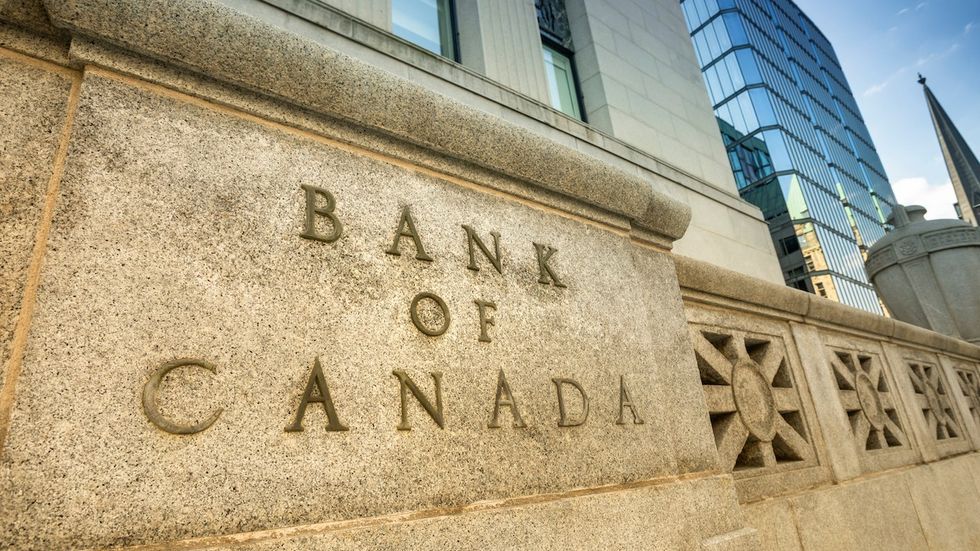As we move further into spring selling season (in theory, at least), countless Canadians are eagerly awaiting this summer’s anticipated drop in interest rates, which have remained elevated for the past two years. In April, the Bank of Canada held its rate at 5% for the sixth straight time. However, there have been suggestions from economists that relief is in sight, with either June or July pegged for the first cut.
Of course, this means that all eyes are on Canada’s economic indicators. A few weeks back, this meant a focus on the country’s loss of GDP momentum. Now, the Bank of Canada (BoC) – an entity holding all the power on the interest rate decision-making front – has just released its Financial Stability Report (FSR).
“Every year the Bank publishes this Report to offer an assessment of the stability of Canada’s financial system and highlight risks that could threaten that stability,” said Bank of Canada Governor Tiff Macklem at a press conference in Ottawa yesterday. “To make the purpose of the Report clear, we’ve changed its name, from the Financial System Review to the Financial Stability Report.”

An Interconnected Financial System And Key Takeaways
Macklem pointed to the interconnectivity of the Canadian financial system and how stress in one sector can spread to others. “So, the emphasis in the FSR is on risks that could ultimately affect the broader financial system and threaten its stability,” said Macklem. “The Report focuses in particular on risks that evolve with developments in the economy. We look at risks that could lead to system-wide stress, in four key sectors: households, businesses, banks, and non-bank financial institutions – such as pension funds, insurance companies and fund managers.”
So, what were the key takeaways? According to Canada’s central bank, despite the trying economic times of late, Canada’s financial system remains resilient. The report’s main message is that the country’s households, businesses, banks, and non-bank financial institutions have been able to proactively adjust to higher interest rates. The much buzzed-about risk of a recession has diminished.
With that said, the second message is that we’re not out of the woods yet; this adjustment is not over and still continues to present risks to financial stability, according to Macklem. Main risks include those related to debt serviceability and asset valuations.
“Over the past year, the risk of recession has diminished in Canada and globally,” said Macklem. “Inflation in most economies has come down, and inflation targets are in sight. However, there could be volatility in markets as expectations shift about when and by how much central banks will lower their policy rates. And there continue to be important geopolitical and economic risks on the horizon.”
In this climate, Macklem says that Canadian households and businesses continue to adjust to past interest rate increases. He highlights how some indicators of financial stress have risen. Simultaneously, the valuations of some financial assets appear to have become stretched, says Macklem.
“This increases the risk of a sharp correction that could generate system-wide stress,” said Macklem. “The recent rise in the use of leverage in the non-bank financial sector could amplify the effects of such a correction. What’s most important is that to properly manage risks, financial system participants need to remain proactive. And financial authorities need to remain vigilant.”

Canadian Households
Macklem then turned the stage over to Bank of Canada Senior Deputy Governor Carolyn Rogers, who expressed how some indicators of household financial stress that fell during the pandemic are back to or above normal levels.
She pointed to survey data that suggests renters are experiencing the biggest increase in financial stress. “After hitting historical lows during the pandemic, the share of households without a mortgage that are behind on credit card and auto loan payments has come back up to – or surpassed – typical levels,” said Rogers. “And over the past year, the share of borrowers without a mortgage who carry a credit card balance of at least 80% of their credit limit has continued to climb.”
With that said, among mortgage holders, Rogers says that indicators of financial stress have remained relatively low among this cohort, even as many have been coping with higher mortgage payments. Since the central bank began raising its policy rate in March 2022 – something that would see interest rates climb to 23-year highs – payments have increased for roughly half of all outstanding mortgages.
“Over the next two and a half years, most of the remaining mortgages will renew, and these borrowers are likely to face relatively larger payment increases,” said Rogers. “At the same time, many mortgage holders have also seen their wages go up. Some have proactively adjusted their spending to help offset higher debt payments. Many also report higher levels of savings available to offset increased payments.”
So, it’s likely not the end of the world (or of their homeowner title) for many. Rogers says that evidence suggests households have the flexibility to continue servicing their debt at higher rates. “We will be watching the data closely for signs of increased financial strain among households, both mortgage holders and non-mortgage holders,” said Rogers. “We’ll also be watching how the labour market evolves, since the biggest factor that determines whether someone can service their debt is if they have a stable income.”
Canadian Businesses
As Rogers highlighted, higher interest rates are also affecting businesses, by slowing demand for the goods and services that businesses sell, while also increasing their financing costs. With that said, the financial health of large businesses is solid – it’s the country’s smaller businesses that are showing more signs of financial stress.
“Insolvency filings by smaller firms have recently jumped after several years of below-average filings,” said Rogers. “There is some indication that this recent increase could be a catch-up or normalization, and the timing could be driven in part by the expiry of government support programs put in place during the pandemic.”
Canadian Banks And The Non-Bank Sector
When it comes to Canadian banks, overall, credit performance remains strong, according to the BoC.
“Banks are proactively contacting customers who are facing payment increases at renewal and working with them on a payment plan,” said Rogers. “They have also been putting more money aside to cover future loan losses, and they continue to maintain healthy capital and liquidity buffers. This means that even if financial conditions and credit performance deteriorate, banks are positioned to absorb losses and continue to provide credit.”
In the non-bank financial sector, more frequent volatility in financial markets in recent years has led to an increased focus on liquidity risks, said Rogers. “At the same time, some firms are increasingly using leverage, or borrowed money, to fund trading activities,” she said. “This makes them more vulnerable in the event of large market swings.”
The bottom line – one doubled down upon by Rogers in her concluding remarks – is that the interconnectivity of the financial system mean that if risks materialize in one sector, they can spread quickly. “This puts a premium on preparedness,” said Rogers. “The proactive steps taken by financial system participants have been positive. And they need to continue. A stable and resilient financial system benefits all Canadians.”
As for those pesky interest rates, Macklem said last week that BoC was getting closer to being able to start cutting rates... but has yet to provide an exact timeline, leaving countless would-be homeowners waiting on the sidelines.






















